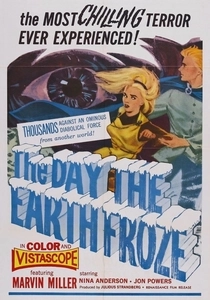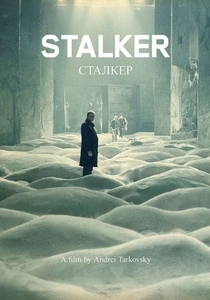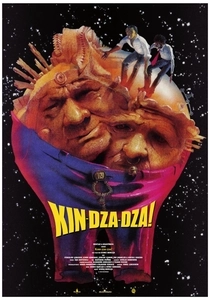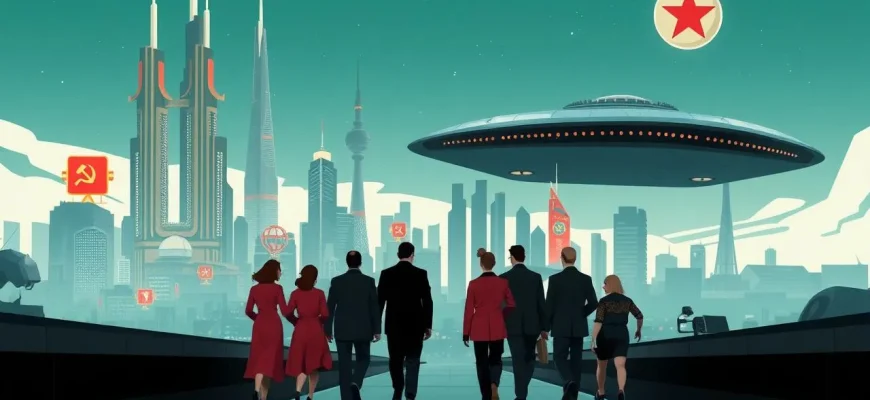Soviet cinema has always been known for its unique approach to storytelling, especially when it comes to science fiction. These films not only showcase the technological and societal visions of the future but also reflect the political and cultural atmosphere of the time. Here's a curated list of 10 Soviet films that delve into the realm of the future, offering a blend of utopian dreams, dystopian warnings, and speculative adventures. Each film in this collection has been dubbed or subtitled in English, allowing a broader audience to appreciate these cinematic gems.

The Day the Earth Froze (1959)
Description: This film, a co-production between the Soviet Union and Finland, combines elements of fantasy and sci-fi, telling the tale of a magical artifact that controls the weather, leading to a battle between good and evil.
Fact: The film was inspired by the Finnish epic "Kalevala." It was one of the first Soviet films to be widely distributed in the West.
 Watch Now
Watch Now 
Solaris (1972)
Description: Solaris is a profound exploration of human consciousness and the mysteries of space. Directed by Andrei Tarkovsky, this film delves into the psychological effects of space travel and the nature of reality itself, making it a cornerstone of Soviet sci-fi cinema.
Fact: The film was adapted from Stanislaw Lem's novel of the same name. It was Tarkovsky's first foray into science fiction, and it won the Grand Prix at the 1972 Cannes Film Festival.
 Watch Now
Watch Now 
Stalker (1979)
Description: Another masterpiece by Tarkovsky, Stalker, explores themes of faith, desire, and the human condition through the journey of three men into the mysterious "Zone," where wishes supposedly come true.
Fact: The film was shot in Estonia, and the Zone was inspired by the Chernobyl Exclusion Zone. It was banned in the Soviet Union for several years due to its philosophical content.
 Watch Now
Watch Now 
Kin-dza-dza! (1986)
Description: A satirical sci-fi comedy, Kin-dza-dza! takes viewers on an interstellar adventure where two ordinary men find themselves on an alien planet with bizarre customs and technology, offering a humorous critique of Soviet society.
Fact: The film uses a fictional language, "Pluuk," which was created specifically for the movie. It has become a cult classic in Russia and beyond.
 Watch Now
Watch Now 
Planet of Storms (1961)
Description: A classic Soviet space adventure where cosmonauts land on Venus to find it teeming with prehistoric life and hostile environments, showcasing the era's fascination with space exploration.
Fact: The film was later edited by Roger Corman into "Voyage to the Prehistoric Planet" for American audiences, with new scenes featuring Basil Rathbone.
 30 Days Free
30 Days Free 
The Amphibian Man (1962)
Description: Based on Alexander Belyaev's novel, this film tells the story of a young man with the ability to live underwater, exploring themes of love, freedom, and the ethics of scientific experimentation.
Fact: The film was a major box office success in the Soviet Union and inspired a popular song that became a hit.
 30 Days Free
30 Days Free 
Moscow-Cassiopeia (1973)
Description: This film follows a group of young cosmonauts on a mission to contact an alien civilization, highlighting the optimism and technological aspirations of the Soviet space program.
Fact: It was followed by a sequel, "Teenagers in the Universe," continuing the adventures of the young space explorers.
 30 Days Free
30 Days Free 
Per Aspera Ad Astra (1981)
Description: A coming-of-age story set in a future where young people are sent to space to learn and grow, reflecting on the Soviet educational system and its dreams for the future.
Fact: The title, which means "Through Hardship to the Stars," reflects the film's theme of overcoming challenges to achieve greatness.
 30 Days Free
30 Days Free 
Dead Mountaineer's Hotel (1979)
Description: A detective story with sci-fi elements, this film involves a mysterious hotel, strange guests, and a murder, all set against a backdrop of futuristic technology and philosophical musings.
Fact: The film was adapted from a novel by the Strugatsky brothers, known for their contributions to Soviet science fiction literature.
 30 Days Free
30 Days Free 
The Irony of Fate (1975)
Description: While not strictly sci-fi, this beloved Soviet film includes futuristic elements in its depiction of a standardized, prefabricated housing project, leading to a comedic mix-up of identities.
Fact: It has become a New Year's Eve tradition in Russia, with millions watching it annually. The film's setting in a futuristic apartment complex adds a unique touch to its narrative.
 30 Days Free
30 Days Free 








